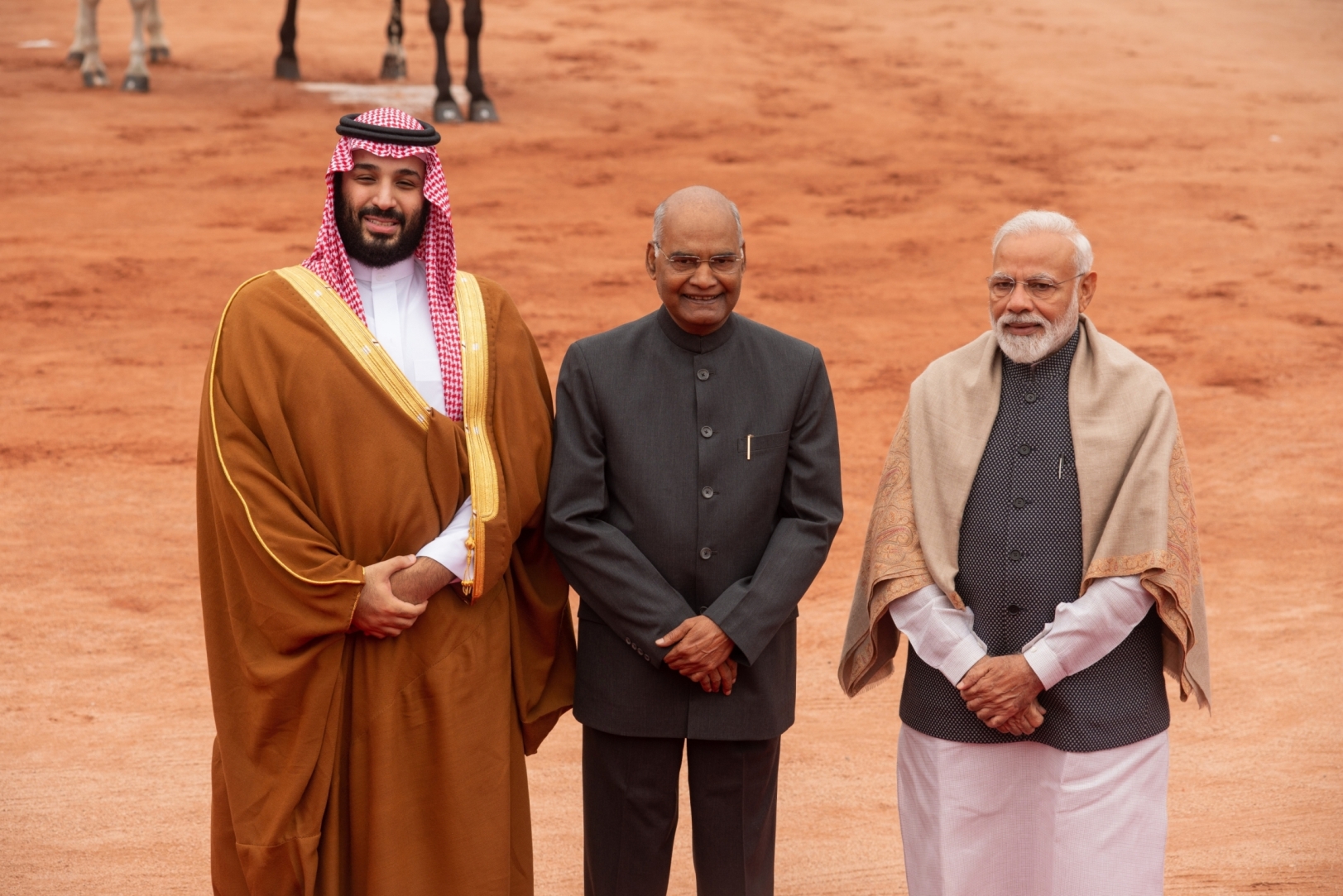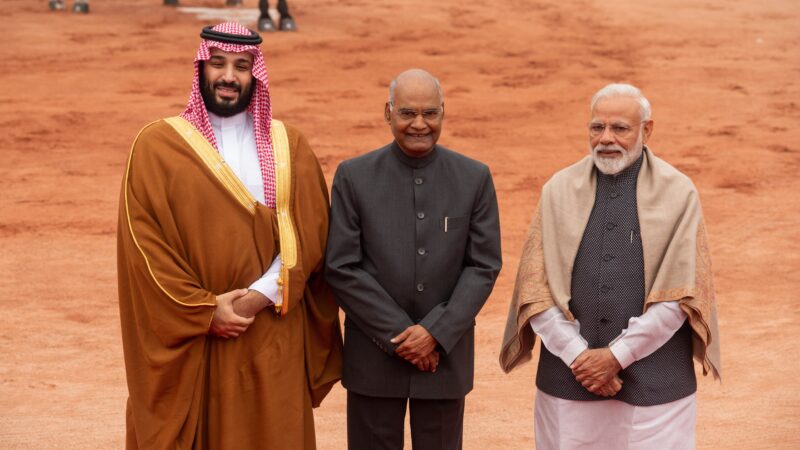Abstract: In the anarchical world order, every country primarily works for its national interest. Nations’ interests often clash, but at the same time, for the sake of diverse resources, nations constantly seek interdependence to ensure sustainable development. This makes diplomacy the most viable tool for national advocacy. Accordingly, Anti-India sentiments, and instances of its manifestations, can be viewed as a compromised state of public diplomacy at India’s end, which require action through urgent and concrete efforts.
Problem Statement: How to understand the gap between India’s playing of public diplomacy and its impact on the ground level in light of Narendra Modi’s pro-active foreign policy featured in Indian media and abroad?
Bottom Line Up Front: Manifesting of anti-India sentiments in South Asia represents a negative development of India’s foreign policy. This reflects the inefficacy of India’s public diplomacy and its lukewarm impact in the region. India must take responsibility for regional cooperation and work towards pursuing long-term goals.
So what?: By understanding its centrality and position in the region, India must initiate efforts that are aligned with long-term goals to provide an underpinning for robust regional cooperation.

Source: shutterstock.com/Pradeep Gaurs
Politics and Emotions
Diplomatic circles generally look for a balanced approach. They refrain from showing anti-national sentiments toward any country. Neither can they afford complacency while engaging with friendly nations, nor do they support shutting all the windows for communication when dealing with a not-so-friendly country. Diplomacy delves to find a middle ground and avoids shores in situations when strategic ambiguity would seem more viable than taking any clear position. However, this is not true when it comes to the populace. Perceptions pervading the population often work in extremes. Citizens can develop extreme sentiments toward any particular nation, and stakeholders of domestic politics could exploit these sentiments. Passing comments against Pakistan during election campaigns in India[1], and vice versa[2], usually works well among the general public. Not only in South Asia, perception-driven sentiments and manifestations by the general public towards a particular country are not rare even in the strategic regions of North America[3] and South America[4], Europe[5], or for that matter, in any other region. World War I started due to a shift from hyper-nationalism to jingoism[6], that is, from loving one’s own nation to hating others’ nations. Thus, having sentiments against a particular nation is not a rare historical phenomenon. USA-Russia relations can be observed in this light as well[7]. In the era of globalisation of world politics, the increased interplay between the domestic and foreign policy is inevitable. Accordingly, in contrast to past times, people in the strategic community can no longer ignore what the general public is thinking on any specific foreign policy issue. In India, foreign policy topics are being discussed during the campaigns for the general election, and leaders refer to these issues in their speeches to earn political gains[8].
In contrast to past times, people in the strategic community can no longer ignore what the general public is thinking on any specific foreign policy issue.
Understandably, the people of a nation could have negative sentiments towards any other nation for a while. However, these sentiments are rarely manifested in the form of public outcry, country-specific protestations by a mainstream political party, public shows of accusation towards a country, making negative rhetoric in electoral campaigns for a specific nation. Although India has prioritised its neighbourhood with the ‘Neighbourhood First’ policy, anti-India manifestations have begun appearing in South Asian media[9]. Barring Afghanistan[10], anti-India sentiments can be traced in varying degrees in every other South Asian nation. Having interacted with Afghani students since the American withdrawal from Afghanistan in August 2021, it was common in those interactions that they appreciate Indian efforts but expect more. They expect concerted efforts for the democratisation process of the country. Even the Taliban regime praises India for its welfare support[11]. In Pakistan, there has been a trend of cultivating anti-India sentiments through textbooks and media to mobilise the masses in favour of political elites to the extent that nationalism means more hatred for India than love for Pakistan[12]. The political party discussing improving India-Pakistan relations generally suffers in the elections[13].
Torn between the Geopolitical Poles
In Afghanistan, the Taliban has restablished its control and power with the help of certain Pakistani elements, but goodwill for India is intact, especially among the common people. As Bhutan has embraced democratic fervour, political parties contest political atmospherics; if one favours continuing the special relationship with India, the other advocates for a balancing act between China and India[14]. Though India has accommodated the change in the content of Article 2 of the Friendship treaty of 1949 by implementing the new Friendship Treaty of 2007, which now talks about ‘common security’ instead of Indian ‘guidance on external relations’; a small section of the Bhutanese population believes that Bhutan might pay the price due to India-China rivalry and Bhutan should not be seen that oriented to India. For a short while, when India introduced a small cut in the fuel subsidies, which later resumed as a commercial course correction, it took a toll on Bhutan’s economy and Bhutan’s trust in India[15]. Nonetheless, Bhutan is trying to design its independent foreign policy, and India enjoys special status in it[16]. However, Bhutan’s attempts to avoid being seen as India’s protectorate state cannot be construed as an anti-India manifestation.
As erstwhile East Pakistan became an independent country as Bangladesh in 1971 with the strategic help of India[17], there exists a section in Bangladesh, although not that decisive in the mainstream opinion, which has antipathy towards India. India and Bangladesh enjoy a mature bilateral relationship, which flourishes when the Awami League, one of Bangladesh’s two main political parties led by Prime Minister Sheikh Hasina (the other is the Bangladesh Nationalist Party (BNP) led by Begum Khaleda Zia) comes into power and becomes strained when BNP wins the election. Some controversial political decisions, although few and far between, give factions like the BNP an opportunity to fuel anti-India sentiments in Bangladesh. For example, the passing of the Citizen (Amendment) Act, 2019 (CAA) by the government of India, which allows Indian citizenship for persecuted minorities belonging to every major religious community and coming from Pakistan, Bangladesh, and Afghanistan, barring Muslims who fled from these neighbouring Muslim-majority countries for the same reasons[18]; how Rohingya refugees, fleeing from Myanmar due to state suppression, are dealt with in India and Bangladesh[19]; or most recently, an allegedly offensive comment on Prophet Muhammad by India’s ruling party’s spokesperson[20]. Nevertheless, overall, the India-Bangladesh relationship remains cordial[21].
As a landlocked country, Nepal is largely situated between India and China. India and China offer open border access to Nepal with mutual agreements. Lately, it has been seen that Nepal is trying to bargain with India in the name of China as China never fails to woo Nepal. Some say it as Nepal plays the ‘China Card’ while dealing with India[22]. Facing internal challenges within the party and government, the then Nepali government led by then Prime Minister K. P. Sharma Oli took anti-India rhetoric on the Chinese plank to win popular support, showcasing itself as hyper-nationalist[23]. Regarding the alleged Indian border blockade[24], the Oli government exploited the opportunity to claim cultural and political resources under the guise of Nepali nationalism[25]. The current government, led by Sher Bahadur Deuba, reiterates Nepali commitment to the relationship with India[26]. For Nepal, geography, history, and society provide a foundation for India-Nepal relations, so although there are few concerns regarding bilateral relations, they are manageable for the most part.
Facing internal challenges within the party and government, the then Nepali government led by then Prime Minister K. P. Sharma Oli took anti-India rhetoric on the Chinese plank to win popular support, showcasing itself as hyper-nationalist.
In Sri Lanka, Chinese influence on the Rajapaksa government’s regime was based on the loud noise of Sinhalese nationalism. Having the Tamil issue at the core, as a majority of the Sinhalese population in Sri Lanka is not yet ready to give due share to minority the Tamils (the minority population with a traditional connection with India’s Tamil majority province, Tamil Nadu), there exist anti-India sentiments[27]. However, India-Sri Lanka relations cannot be perceived solely through the prism of the Tamil issue. Much more impetus is available to sustain a working bilateral relationship between the countries. As India has constructively supported Sri Lanka in its financial crisis[28], India is enjoying improved relations with Sri Lanka. In the Maldives, there are a few concerns regarding the Lakshadweep administration and polarisation of politics within Indi[29]. The recent ‘India Out Campaign’ was sponsored by the Progressive Party of the Maldives led by Abdullah Yameen, which lost in the last general election. The party in power, led by President Solih-Maldivian Democratic Party, has announced that the ‘India Out Campaign’ violates the Vienna Convention[30] and is a danger to Maldives’ national security. In the Maldives, there is no footing for anti-India sentiments among the general public. This analysis clearly establishes that manifestations of anti-India sentiments in South Asia are largely due to internal politicking sparked by countries’ political elites as opposed to any popular opinions.
The Media aspect of this phenomenon should also not be missed. Some public commentators in India have raised the issue that a few elements in media, including western and regional media, are continuously working against India’s interest and more particularly, against BJP led government[31]. The English language publications of the Chinese Communist Party, such as Global Times, China Daily, and the Beijing Review, regularly target India and its several policies in an acerbic tone[32]. Some information security analysts have found proof that the sleeper cells of Pakistan are trying to create an atmosphere of disharmony in India by using forged proxies and the internet. It has been reported that the Turkish media infrastructure is acting as a platform to bring together pro-Pakistani and anti-India elements together[33]. The Ministry of Information and Broadcasting, India, recently blocked 20 youtube channels (1 crore 20 lakh subscriber base with 130 crore views) and two websites dubbed as Pakistan-sponsored fake news networks for spreading anti-India propaganda[34]. In UK media, the allegation has also been made to paint a negative image of India[35]. American Newspaper, The New York Times, has invited fierce criticism over its job advertisement seeking a South Asia Business correspondent[36]. In the advertisement itself, the newspaper criticised the Prime Minister of the country, Mr. Modi as ‘the advocate of self-sufficient, muscular nationalism centred on Hindu majority’.
Some information security analysts have found proof that the sleeper cells of Pakistan are trying to create an atmosphere of disharmony in India by using forged proxies and the internet.
The Problem Exists – but Why?
Public diplomacy takes care of a nation’s branding in the region and the world. However, as mentioned above, some controversial or undesirable occurances can create chinks in this diplomatic armour. A country that aspires to be a smart power cannot take such occurrences for granted. From the question of ‘Do the anti-India sentiments really exist?’ to the question of ‘are these sentiments growing?’, it is clear that some causal factors are triggering and fueling such sentiments. It is essential to discuss these factors to understand India’s position in the region and deal with India’s challenges with respect to regional stability.
The global context is the first factor that must be focused on to analyse these phenomena. In this liberal world order, globalisation has failed to provide a level playing field for nations, but it serves as a conducive milieu to facilitate nations’ independent foreign policy based on uncompromising national interests. Finally, conducting independent foreign policy depends on a nation’s capability, but citizens gradually develop aspirations accordingly. Political elites, hunting for a formula to unite people against all discontentment, easily provoke hyper-nationalism, which becomes tangible in the form of hatred towards any other nation.
In this liberal world order, globalisation has failed to provide a level playing field for nations, but it serves as a conducive milieu to facilitate nations’ independent foreign policy based on uncompromising national interests.
In general, South Asian nations share a colonial past and its impact. Socio-political institutions have yet to fully evolve in the region owing to colonial shock. The roots of many regional bilateral contentions can be traced to the colonial past. With amateurish political institutions, nations of the region often prefers petty issues of domestic politics over developing long-term linkages[37]. This created a trust deficit between the people of various countries in the region. Then, the geography of the Republic of India further provokes insecurity in the region’s psyche[38]. Therefore, any small provocation works as an anti-India manifestation laden with colonial baggage and a few historical wrongs. This is the second factor that must not be overlooked.
The South Asian region comprises a huge population. For development and security, resources are required in abundance, but the capability to afford them varies greatly from nation to nation. This provokes discontentment against India, as the country has access to most of the water and land resources and enjoys comparative affordability to maintain the flow of these resources. This is true not only in economic terms but also for cultural capital. Further, India dominates the region in terms of soft power[39], which paves essential corridors for connecting people across boundaries.
China’s rise in the world economy and its aspiration to become a superpower has led it to establish its footprints in South Asia. China cannot afford to have an emerging power like India in its immediate vicinity, so it is making huge investments of economic and diplomatic capital into the lands and waters of the region. This urges nations in the region to pursue a balancing act with India vis-a-vis China. Thus, India is under associated pressures from bargaining counterparts in the region.
India as a Regional Leader
Considering India’s centrality and pivotal position in South Asia, it must step up to the plate and take initiatives for furthering regional cooperation, security, and stability, even if initially, these gestures may go unnoticed or unappreciated by its neighbours. Such initiatives would effectively counter the politics of fueling anti-India sentiments in the region. For example, India must take some concrete steps following long-term goals such as border management, regional cooperation, creating scope to establish a regional economic bloc, the institutionalisation of cross-border connections, and cross-border cooperation for democratisation processes, among others. A robust border management policy to address border issues that occur frequently and affect the common people of all countries involved should be a priority. Inclusive border talks can be explored to complete the process of setting the definition of border mutually, demarcation, delimitation, and regular bureaucratic practices wherever it does not exist yet.
India must take some concrete steps following long-term goals such as border management, regional cooperation, creating scope to establish a regional economic bloc, the institutionalisation of cross-border connections, and cross-border cooperation for democratisation processes, among others.
This is challenging as border management cannot operationalised single-handedly. It requires the involvement of all the stakeholders. Since geopolitical variables are comparatively constant to social-political variables working in bilateral relations, India should invest in diplomatic capital for the long-term goal of being a regional leader. Whether it is an open border system (as in the case of Nepal and Bhutan), or a closed border system (as is the case with the rest of the nations in the region), India should adopt a standard boundary behaviour to allow the border to function effectively both as a barrier and a bridge. A standard boundary behaviour would be free from any bias, transparent, and responsive to the concerns of the people who live on or close to these borders. This would result in enhanced people-to-people contact and help in building better cross-border trust. Though largely overlooked as a measure, border management is not a standalone security mechanism. It involves various military, diplomatic, and civilian processes to engender a comprehensive and sustainable solution for regional stability.
A standard boundary behaviour would be free from any bias, transparent, and responsive to the concerns of the people who live on or close to these borders.
On the diplomatic front, India should show proper sensibility to the aspirations of the neighbouring nations. Every nation wants to grow, develop, and thrive. Following the spirit of the Gujral doctrine, in which India favours working in the interest of its neighbours even if the gestures would not be complemented, India could offer nation-specific long-term commitments for resource-sharing, spelling out the Indian concerns and expectations loudly and lucidly. India can regularly translate public diplomacy into action using arts, sports, and cultural resources. India must invest its soft power resources to drive a robust regional public diplomacy. India is the largest democracy in the world, so strengthening the region’s civil societies would give impetus to the democratic ethos in the region. India should take the lead by using its academic and technological prowess. This will prevent political institutions from being exploited by the corrupt leaders of the region. Like any other strategic region of the world, not every stakeholder country in South Asia would be willing to participate in these initiatives with equal zeal. Nonetheless, the non-participation of one country should not hamper the interests of the whole region. Barring Pakistan, India generally enjoys mutual confidence, especially regarding regional cooperation. Endeavours for regional cooperation would make atmospherics even for less interested countries like Pakistan because all countries in this region have some common enemies in the forms of poverty, unemployment, malnutrition, inequality, and communalism, among others. The more people-to-people connections increase, the closer nations can come to overcome the issue of trust deficit. It will not be easy, but long-term policies require safe incubation.
Dr. Shreesh Kumar Pathak, an expert on South Asian Affairs and Indian Foreign Policy, currently teaches at the Amity Institute of International Studies, Amity University, Noida. He holds a PhD in Border Management from the Centre for South Asian Studies, Jawaharlal Nehru University, New Delhi. He regularly writes editorial pieces in newspapers and appears in media discussions on global affairs. His recent pieces include Lankan Crisis: Jingoism to Jeopardy?, India’s Diplomatic Investments in American Imperium, Electoral Reforms are Urgent, They Can’t Wait Anymore, and Covid Pandemic and World Politics,among others. He is also involved in political literacy campaigns. The views contained in this article are the author’s alone.
[1] “BJP raises Pakistan every time it faces defeat: Congress,” The Hindu, November 01, 2020, last accessed July 10, 2022, https://www.thehindu.com/news/national/bjp-raises-pakistan-every-time-it-faces-defeat-cong/article32993113.ece; “Narendra Modi ‘only’ PM to give befitting reply to Pakistan: Amit Shah,” The Economic Times, March 26, 2019, last accessed July 10, 2022, https://economictimes.indiatimes.com/news/elections/lok-sabha/india/narendra-modi-only-pm-to-give-befitting-reply-to-pakistan-amit-shah/articleshow/68585064.cms?from=mdr.
[2] “Imran Khan attacks PM Modi, RSS during poll rally in PoK, calls himself ‘brand ambassador’ of Kashmiris,” The Times of India, July 18, 2021, last accessed July 10, 2022, https://timesofindia.indiatimes.com/world/pakistan/imran-khan-attacks-pm-modi-rss-during-poll-rally-in-pok-calls-himself-brand-ambassador-of-kashmiris/articleshow/84519636.cms.
[3] J.J. McCullough, “Canadian anti-Americanism remains toxic — and Americans are helping,” The Washington Post, May 21, 2020, last accessed July 10, 2022, https://www.washingtonpost.com/opinions/2020/05/21/canadian-anti-americanism-remains-toxic-americans-are-helping/.
[4] Marcos Aguinis, “Anti-Americanism in Latin America,” Wilsoncenter, November 20, 2006, https://www.wilsoncenter.org/event/anti-americanism-latin-america.
[5] Annegret Eppler, Lisa H. Anders and Thomas Tuntschew, Europe ́s political, social, and economic
(dis-)integration: Revisiting the Elephant in times of crises (Political Science Series Working Paper No. 143), Institute for Advanced Studies, October 2006.
[6] Katherine Andrews, The Necessity to Conform: British Jingoism in the First World War (Dalhousie Review, Volume 53, Number 2, 1973), https://dalspace.library.dal.ca/handle/10222/64347.
[7] Martin Russel, “US-Russia relations: Geopolitical, security, economic and human dimensions,“ Think Tank European Parliament, Febraury 08, 2022, https://www.europarl.europa.eu/thinktank/en/document/EPRS_BRI(2022)698919.
[8] Neelam Delo, “Foreign policy in Indian elections,” Gateway House, May 09, 2019, https://www.gatewayhouse.in/2019-indian-elections/.
[9] Mohammed Sinan Siyech and Nazneen Mohsina, “Anti-India Sentiments in South Asia: Terrorist Recruitment Narratives,” MEI@75, July 23, 2018, last accessed July 10, 2022, https://www.mei.edu/publications/anti-india-sentiments-south-asia-terrorist-recruitment-narratives.
[10] Sawabdin Makhkash, “What do Afghans think of India?,” Pajhwok, https://pajhwok.com/opinion/what-do-afghans-think-of-india/.
[11] “Taliban praise India for development efforts, but warn again…,” The Times of India, August 15, 2021, last accessed July 10, 2022, https://timesofindia.indiatimes.com/world/south-asia/taliban-praise-india-for-development-efforts-but-warn-against-military-role/articleshow/85340924.cms; “Pakistan donated inedible wheat, India’s far better: Taliban official,” ANI, March 05, 2022, https://www.aninews.in/news/world/asia/pakistan-donated-inedible-wheat-indias-far-better-taliban-official20220305055100/.
[12] “Chapter 6. How Pakistanis and Indians View Each Other,” Pew Research Center, June 21, 2011, last accessed July 10, 2022, https://www.pewresearch.org/global/2011/06/21/chapter-6-how-pakistanis-and-indians-view-each-other/.
[13] Anam Zakaria, “Why many Pakistanis view Indians as the monsters across the border,” Scroll.In, May 19, 2016, last accessed July 10, 2022, https://scroll.in/article/807722/why-for-many-pakistanis-indians-are-the-monsters-across-the-border.
[14] Jyoti Malhotra, “Pro-India party in Bhutan gets knocked out of polls as Doklam jitters abound,“ The Print, September 17, 2018, https://theprint.in/politics/pro-india-party-in-bhutan-gets-knocked-out-of-polls-as-doklam-jitters-abound/119327/;Gopilal Acharya, “As Bhutan gears up for its third general election, many wonder if India will interfere again,” Scroll.In, September 11, 2018, last accessed July 10, 2022,https://scroll.in/article/893459/as-bhutan-gears-up-for-its-third-general-election-many-wonder-if-india-will-interfere-again.
[15] Paul Stobdan, “ India’s Real Problem Lies in its Bhutan Policy, Not the Border,“ The Wire, July 14, 2017, last accessed July 10, 2022, https://thewire.in/diplomacy/india-china-doklam-real-problem-bhutan.
[16] Jaishankar, “India-Bhutan ties prompted by moral principles, emotional bonds,” Business Standard, April 29, 2022, https://www.business-standard.com/article/current-affairs/india-bhutan-ties-prompted-by-moral-principles-emotional-bonds-jaishankar-122042901053_1.html.
[17] Narasiah, “K.S. Nair’s December in Dacca review: War, conflict, and India’s role in Bangladesh’s liberation,” The Hindu, June 23, 2022, https://www.thehindu.com/books/books-reviews/kra-narasiah-december-in-dacca-ks-nair/article65545462.ece.
[18] “What is CAA,” The Times of India, January 09, 2020, last accessed July 10, 2022, https://timesofindia.indiatimes.com/india/what-is-caa/articleshow/73153785.cms.
[19] BBC, “Myanmar Rohingya: What you need to know about the crisis,” January 23, 2020, last accessed July 10, 2022, https://www.bbc.com/news/world-asia-41566561.
[20] BBC, “Nupur Sharma: The Indian woman behind offensive Prophet Muhammad comments,” July 01, 2022, https://www.bbc.com/news/world-asia-india-61716241.
[21] Habibul Haque Khondker, “Why are some Bangladeshis anti-Indian?,” The Daily Star, July 23, 2009, https://www.thedailystar.net/news-detail-98243.
[22] The Free Press Journal, “Why India shouldn’t worry about Nepal’s ‘China card’,” May 31, 2019, last accessed July 10, 2022, https://www.freepressjournal.in/headlines/why-india-shouldnt-worry-about-nepals-china-card.
[23] Sidharth Shekhar, “PM KP Oli plays ‘nationalism’ card, accuses India of conspiring with Nepal political forces to topple his govt,” Times Now News, June 29, 2020, https://www.timesnownews.com/international/article/pm-kp-oli-plays-nationalism-card-accuses-india-of-conspiring-with-nepali-political-forces-to-topple-his-govt/613272.
[24] Bishwanath Ghosh, “Anger against India over blockade snowballs in Nepal,” The Hindu, January 27, 2015, last accessed July 10, 2022, https://www.thehindu.com/news/national/Anger-against-India-over-blockade-snowballs-in-Nepal/article60516686.ece.
[25] The Indian Express, “PM KP Sharma Oli claims Yoga originated in Nepal, not in India,” June 23, 2021, https://indianexpress.com/article/india/pm-oli-claims-yoga-originated-in-nepal-not-in-india-7372280/.
[26] Ranjit Rae, “How Modi and Deuba mended soured India Nepal Relations,” Times of India, May 18, 2022, https://timesofindia.indiatimes.com/india/how-modi-and-deuba-mended-soured-india-nepal-relations/articleshow/91644356.cms.
[27] Shreesh Pathak, “Lankan Crisis: Jingoism to Jeopardy?,” KIIPS, April 16, 2022, http://www.kiips.in/research/lankan-crisis-jingoism-to-jeopardy/.
[28] https://www.business-standard.com/article/international/india-sends-over-2-bn-humanitarian-aid-consignment-to-sri-lanka-amid-crisis-122052200699_1.html
[29] https://www.orfonline.org/expert-speak/is-there-a-revival-of-anti-india-sentiments-in-troubled-maldives/
[30] Maldives’ obligations under the Vienna Convention on Diplomatic Convention and the International Convention on the Elimination of all Forms of Racial Discrimination, https://thewire.in/south-asia/maldives-solih-india-out-decree-yameen.
[31] Abhijit Iyer-Mitra, “Why foreign media loves anti-BJP, champagne socialists as columnists,” The Print, May 07, 2022,https://theprint.in/opinion/foreign-media-loves-anti-bjp-champagne-socialists-columnists/415968/
[32] The Tribute, “Insight into China’s anti-India propaganda,” January 17, 2022, https://www.tribuneindia.com/news/comment/insight-into-chinas-anti-india-propaganda-361840.
[33] Manish Shukla, “Turkey-Pakistan nexus acting against India to help Islamabad take upper hand on Kashmir,” Zeenews, December 30, 2020, https://zeenews.india.com/world/turkey-pakistan-nexus-acting-against-india-to-help-islamabad-take-upper-hand-on-kashmir-2333562.html.
[34] Indian Ministry of Information & Broadcasting, “India dismantles Pakistani coordinated disinformation operation,” December 21, 2021, https://pib.gov.in/PressReleasePage.aspx?PRID=1783804.
[35] Nitin Mehta , “ K media’s anti India bias all too evident,“ Sunday Guardian, December 10, 2017, last accessed July 10, 2022, https://www.sundayguardianlive.com/opinion/10832-uk-media-s-anti-india-bias-all-too-evident.
[36] Kabir Upmanyu, “New York Times Job Ad Sparks Misplaced ‘Anti-India’, ‘Anti-Hindu’ Ire,” The Quint, July 05, 2021, last accessed July 10, 2022, https://www.thequint.com/news/india/new-york-times-job-advertisement-india-sparks-row-pm-narendra-modi-government#read-more.
[37] Manzoor Nazer, “India’s Domestic Politics And Its Impact On The Regional Integration Process In South Asia,” https://www.researchgate.net/publication/281452605_INDIA’S_DOMESTIC_POLITICS_AND_ITS_IMPACT_ON_THE_REGIONAL_INTEGRATION_PROCESS_IN_SOUTH_ASIA_A_STUDY_INTO_THE_STATUS_OF_MUSLIMS_IN_INDIA.
[38] Manorama Kohli “INDIA AND SOUTH ASIAN REGIONAL COOPERATION,” The Indian Journal of Political Science, Vol. 49, No. 3 (July – Sept. 1988), 301-311, https://www.jstor.org/stable/41855876.
[39] Anjan Saha, “A HARD LOOK AT INDIA’S SOFT POWER STRATEGY IN SOUTH ASIA,” Proceedings of the Indian History Congress, Vol. 78 (2017), 1243-1248, https://www.jstor.org/stable/26906205.






